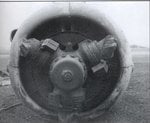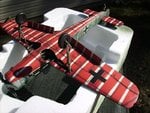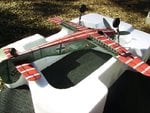Airframes
Benevolens Magister
Dan, the prop blades on the 190D were wood. I'm not 100% sure, but they were most probably covered in a thin, rubber-type 'skin', to eliminate water penetration, like the British 'Jablo' blades. The only real weathering that would possibly be noticed, would be a repair to this 'skin', where a stone chip, or ice or similar, had penetrated. I was told by a Spitfire pilot that this type of damage, minimal though it might have been, was repaired by borrowing a lady's nail varnish, and painting this over the affected area, thereby sealing it from the elements! Might sound strange, but it was extremely important to keep the blade surface sealed from moisture; penetration, by rain, at high speed could lead to ingress into the laminations of the 'Jablo' type construction, causing severe damage to the prop. This, of course, had the potential for being catastrophic.
Apart from this, the only other effect you might see on the blades, would be staining; dried water or possibly oil streaks.
The pitch control 'sockets' at the root of each blade were alloy, possibly stainless steel, and were a dull silver in colour. In other words, not shiny like chrome, but not totally matt either - more a dull sheen.
Apart from this, the only other effect you might see on the blades, would be staining; dried water or possibly oil streaks.
The pitch control 'sockets' at the root of each blade were alloy, possibly stainless steel, and were a dull silver in colour. In other words, not shiny like chrome, but not totally matt either - more a dull sheen.




